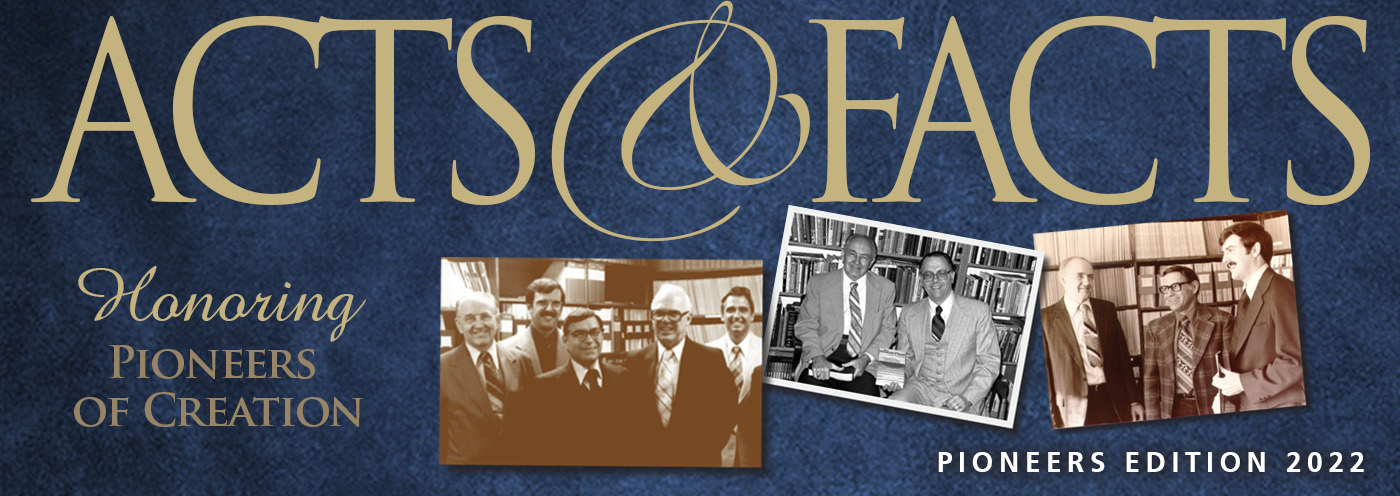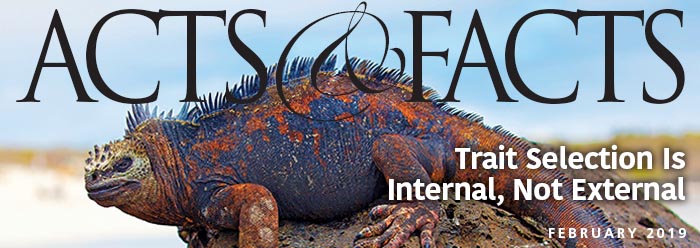The recent claim of a nearly half-inch mammal foot in the stomach of a ‘dinosaur’ is tainted by evolutionary dogma.1 The fossil foot of the mouse-sized mammal is real enough, but the assertion that Microraptor is a dinosaur is more controversial. In fact, ICR’s scientists have concluded that the 3-foot long, feathered Microraptor was, instead, just an extinct bird.2,3,4
Microraptor is famous because it has feathers on all four limbs. Over 300 specimens have been found in the Jiufotang Formation in Liaoning Province in northeastern China since the early 2000s.1 Other Microraptor specimens have been found with fish, lizard, and bird remains in their gut regions, too, indicating they ate a variety of animals. However, the fossils do not make it clear if Microraptor was exclusively a scavenger, a predator, or an opportunistic eater.1
Publishing in the Journal of Vertebrate Paleontology, the science team included staff from Queen Mary University of London, Mount Marty College, Yankton, South Dakota, the University of Alberta, the Philip J. Currie Dinosaur Museum, Wembley, Alberta, the Institute of Vertebrate Paleontology and Paleoanthropology, Chinese Academy of Sciences, Beijing, and McGill University, Montreal.
Co-author Hans Larsson, a professor of biology at McGill University’s Redpath Museum in Montreal said:
At first, I couldn’t believe it. There was a tiny rodent-like mammal foot about a centimeter (0.4 inch) long perfectly preserved inside a Microraptor skeleton. Larsson came across the fossil while visiting museum collections in China. These finds are the only solid evidence we have about the food consumption of these long extinct animals—and they are exceptionally rare.5
This unusual bird was first described from specimens found in rocks identified as Cretaceous (near the high water point of the global Flood). Yet, it had asymmetrical feathers, just like modern flying and gliding birds, on both its front and hind limbs.6,7 The even more famous feathered bird, Archaeopteryx, also has flight feathers, feathers on its hind legs, and a bony tail just like Microraptor.8
Recent studies have demonstrated that Archaeopteryx flew like a pheasant.9 Dennis Voeten of the European Synchrotron facility in France said, “We imagine something like pheasants and quails. If they have to fly to evade a predator, they will make a very quick ascent, typically followed by a very short horizontal flight, and then they will make a running escape afterwards.”10
It’s likely that Microraptor could also fly in a similar manner to Archaeopteryx because it had comparably shaped feathers and the same overall body structure. So why call it a dinosaur? Everything about it indicates it was a flying bird. Even its diet is similar to many extant birds, eating fish and other small animals. This is indicative of a selective eater, engineered with great eyesight, talons, and flight capacity to attack and hunt or scavenge from the air.
In addition, evolutionary scientists have not been able to explain the sudden appearance of flight feathers on birds. The best story they have offered is that over millions of years, dinosaur scales somehow grew into symmetrical gliding feathers and later evolved into asymmetrical flying feathers.6,11 However, this view is so lacking in scientific substance that even other evolutionists disagree with it.12
Microraptor was a bird and not a dinosaur. It was part of the animal kinds created on Day 5 of Creation Week and not Day 6 like the dinosaurs. And, like Archaeopteryx, it probably flew like a pheasant—in short spurts. After the Fall, these birds began to eat small animals that included mammals, lizards, and even other smaller birds. We can deduce this from the fossils. We can also conclude that these animals were living in close proximity in the pre-Flood world and became entombed together in the rising waters of the global Flood.
The Bible reveals that birds have always been birds since the beginning.
References
1. Hone, D.W.E., et al. 2022. Generalist diet of Microraptor zhaoianus included mammals, Journal of Vertebrate Paleontology.
2. Thomas, B. 2011. Is New Fossil a Bird-Eating Dinosaur? Creation Science Update. Posted at icr.org on December 7, 2011, accessed December 27, 2022.
3. Thomas, B. 2020. New Evidence Hurts Feathered Dinosaur Theory. Creation Science Update. Posted at icr.org on September 9, 2020, accessed December 27, 2022.
4. Clarey, T. 2013. Study Fails to Prove Flight Feathers Evolved.Creation Science Update. Posted at icr.org on October 7, 2013, accessed December 27, 2022.
5. Hunt, K. 2022. Rare evidence that dinosaurs feasted on mammals uncovered. CNN. Posted at CNN.com on December 26, 2022, accessed December 27, 2022.
6. Xu, X. et al. 2003. Four-winged dinosaurs from China. Nature. 421 (6921): 335-340. 7. Li, Q. et al. 2012.
7. Reconstruction of Microraptor and the evolution of iridescent plumage. Science. 335 (6073): 1215-1219.
8. Clarey, T. 2015. Dinosaurs: Marvels of God's Design. Green Forest, AK: Master Books, p. 127.
9. Voeten, D. F. A. E. et al. 2018. Wing bone geometry reveals active flight in Archaeopteryx. Nature Communications 9: 923.
10. Briggs, H. 2018. Archaeopteryx flew like a pheasant, say scientists. BBC. Posted to BBC News March 13, 2018, accessed December 27, 2022.
11. Dyke, G. et al. 2013. Aerodynamic performance of the feathered dinosaur Microraptor and the evolution of feathered flight. Nature Communications. 4 (2489).
12. For example, evolutionist Alan Feduccia once wrote, "The major, and most worrying, problem of the feathered dinosaur hypothesis is that the integumental structures have been homologized with avian feathers on the basis of anatomically and paleontologically unsound and misleading information." See Feduccia, A.T. et al. 2005. Do Feathered Dinosaurs Exist? Testing the Hypothesis on Neonatological and Paleontological Evidence. Journal of Morphology. 266:134.
* Dr. Clarey is Research Scientist at the Institute for Creation Research and earned his doctorate in geology from Western Michigan University.







